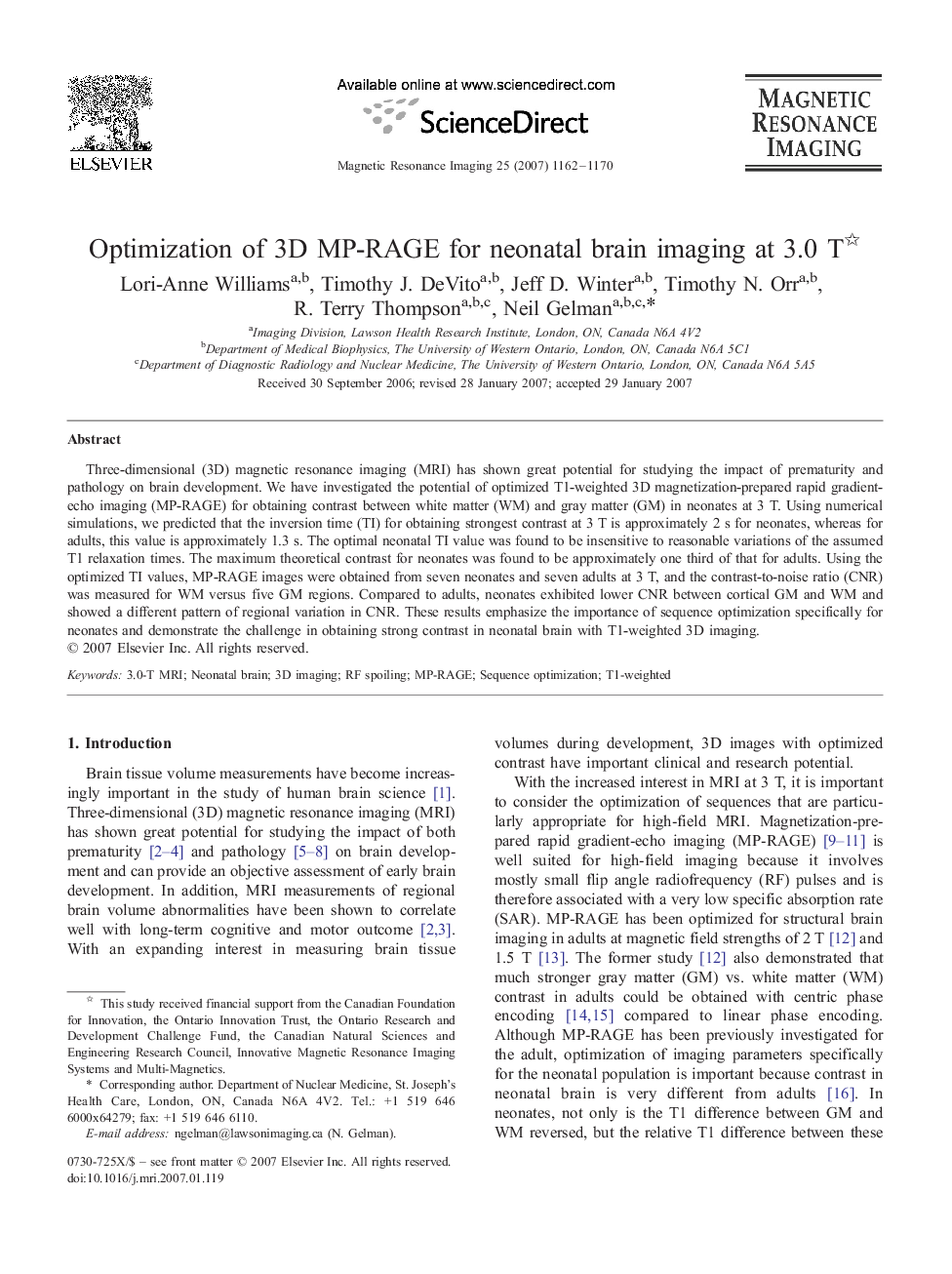| Article ID | Journal | Published Year | Pages | File Type |
|---|---|---|---|---|
| 1807478 | Magnetic Resonance Imaging | 2007 | 9 Pages |
Three-dimensional (3D) magnetic resonance imaging (MRI) has shown great potential for studying the impact of prematurity and pathology on brain development. We have investigated the potential of optimized T1-weighted 3D magnetization-prepared rapid gradient-echo imaging (MP-RAGE) for obtaining contrast between white matter (WM) and gray matter (GM) in neonates at 3 T. Using numerical simulations, we predicted that the inversion time (TI) for obtaining strongest contrast at 3 T is approximately 2 s for neonates, whereas for adults, this value is approximately 1.3 s. The optimal neonatal TI value was found to be insensitive to reasonable variations of the assumed T1 relaxation times. The maximum theoretical contrast for neonates was found to be approximately one third of that for adults. Using the optimized TI values, MP-RAGE images were obtained from seven neonates and seven adults at 3 T, and the contrast-to-noise ratio (CNR) was measured for WM versus five GM regions. Compared to adults, neonates exhibited lower CNR between cortical GM and WM and showed a different pattern of regional variation in CNR. These results emphasize the importance of sequence optimization specifically for neonates and demonstrate the challenge in obtaining strong contrast in neonatal brain with T1-weighted 3D imaging.
